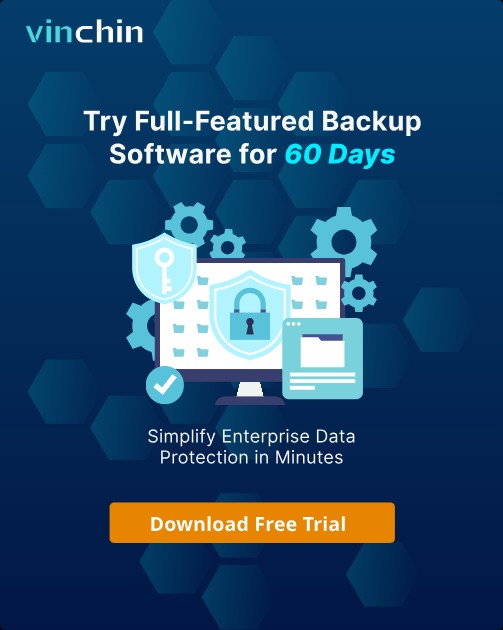-
What is Hyper-V Server Core?
-
What Are the Top 5 Reasons to Choose Hyper-V Server Core?
-
What Are the Essential Management Methods for Hyper-V Server Core?
-
Protecting Your Virtual Machines with Vinchin
-
Hyper‑V Server Core FAQs
-
Conclusion
Virtualization has become essential in today's data centers. For many IT teams, Hyper-V Server Core stands out as a secure and efficient way to run virtual machines at scale. But what makes it different from other installations? How do you manage it without a graphical interface? And how can you protect your VMs in this environment? This guide answers those questions step by step—from basic concepts to advanced management—so you can master Hyper-V Server Core.
What is Hyper-V Server Core?
Hyper-V Server Core is a minimal installation option of Windows Server designed specifically for running Microsoft's Hyper-V hypervisor. Unlike traditional Windows Server installations that include a full desktop experience, Server Core removes the graphical user interface (GUI) and non-essential services. This headless approach means you interact mainly through command-line tools or remote management consoles.
But what exactly is a hypervisor? A hypervisor is software that creates and runs virtual machines by abstracting hardware resources like CPU, memory, storage, and networking. There are two types: Type-1 (bare-metal), which runs directly on hardware (like Hyper-V), and Type-2 (hosted), which runs atop an operating system. By using Hyper-V—a Type-1 hypervisor—you get direct access to hardware performance while maintaining strong isolation between VMs.
Server Core's design reduces potential attack surfaces because fewer components mean fewer vulnerabilities. It also consumes less RAM, CPU, and disk space compared to full GUI installations—a benefit that translates into more resources available for your workloads.
When deploying Hyper-V on Server Core, you manage everything using PowerShell commands or remote tools such as Hyper-V Manager or Windows Admin Center from another machine. This setup suits production environments where efficiency and security matter most.
What Are the Top 5 Reasons to Choose Hyper-V Server Core?
Why do so many IT professionals recommend deploying virtualization hosts with Hyper-V Server Core? Let's explore its main advantages in detail:
1. Smaller Attack Surface & Improved Security
Reducing unnecessary features lowers risk—plain and simple. With no GUI or extra background services running by default, there are fewer ways attackers can compromise your host (Microsoft Security Baseline). For example, disabling over 30 non-essential services—including Print Spooler—removes common vectors used in attacks like ransomware outbreaks.
Microsoft reports that servers running only required roles have up to 50% fewer Common Vulnerabilities and Exposures (CVEs) than their full-GUI counterparts (Microsoft Docs). Fewer installed components also mean fewer patches needed each month—which reduces downtime due to reboots after updates.
2. Lower Resource Consumption
Every megabyte counts when hosting dozens—or hundreds—of VMs per server. Without the overhead of desktop graphics libraries or unused applications, Hyper-V Server Core uses less RAM (often saving 2–4 GB per host), less CPU time on background processes, and about 4 GB less disk space compared to Desktop Experience installations (Windows SysReqs).
This lean footprint leaves more resources available for your virtual machines themselves—a key factor when maximizing density in modern data centers.
3. Reduced Maintenance & Patching
With fewer installed components, Hyper‑V Server Core requires less maintenance: fewer monthly updates, shorter patch times, and faster reboots—helping avoid downtime during business hours. Microsoft reports up to 40% fewer updates per year when using Server Core across an environment.
4. Streamlined Management & Automation
Server Core was built with automation in mind from day one—it supports full PowerShell scripting out-of-the-box plus remote management via secure protocols like WinRM (Windows Remote Management). You can automate deployments using scripts or Infrastructure-as-Code tools such as Desired State Configuration (DSC).
For those who prefer graphical interfaces occasionally—or need dashboards for reporting—remote tools like Windows Admin Center offer web-based control panels without sacrificing security or efficiency at the host level.
5. Best Practice Platform for Production Workloads
Industry experts agree: if you're building clusters or running mission-critical workloads on-premises or in hybrid clouds using Microsoft technologies, then starting with Hyper-V on Server Core is considered best practice (Microsoft Docs). In fact, since Windows Server 2019 LTSC release—and continuing into Windows Server 2022—the default installation mode recommended by Microsoft is now “Server Core.”
What Are the Essential Management Methods for Hyper-V Server Core?
Managing a headless Hyper‑V host might seem daunting at first—but with the right tools and techniques, it quickly becomes efficient and reliable. Here's how IT admins streamline operations on Server Core.
Method 1. Initial Setup with SConfig
After installing Windows Server (Core edition), you're greeted with a command prompt—no desktop, no Start menu.
Use sconfig, a built-in, menu-based tool to:
Rename the computer
Join a domain
Configure network settings
Enable Remote Desktop
Download and install updates
Simply type sconfig at the prompt to begin. This sets up the basics before switching to remote management.
Method 2. Day-to-Day Management via PowerShell
Once network access is ready, PowerShell becomes your primary tool for controlling both the host and its VMs.
Example:
Install-WindowsFeature -Name Hyper-V -IncludeManagementTools -Restart
Create a VM:
New-VM -Name "WebVM" -MemoryStartupBytes 4GB -Path "C:\VMs" ` -NewVHDPath "C:\VHDs\WebVM.vhdx" -NewVHDSizeBytes 50GB
You can script everything—from provisioning and snapshot scheduling to cleanup and reporting.
Method 3. Remote Management Using GUI Tools
You don’t lose access to GUIs completely. Instead, manage Server Core remotely:
Hyper‑V Manager: Connect to Core hosts from another Windows device to manage VMs, switches, storage, and checkpoints.
Windows Admin Center: A browser-based dashboard for multi-host monitoring, VM lifecycle, storage pools, event logs, and live migrations.
Ensure firewall rules are enabled for:
Enable-NetFirewallRule -DisplayGroup "Remote Service Management"
Method 4. Networking Setup on Core
Networking is CLI-driven but simple once understood. For example:
Create a virtual switch:
New-VMSwitch -Name "vSwitch01" -NetAdapterName "Ethernet1" -AllowManagementOS $true
Assign a static IP:
New-NetIPAddress –InterfaceAlias 'vEthernet (vSwitch01)' ` –IPAddress '192.168.100.10' –PrefixLength 24 –DefaultGateway '192.168.100.1'
Set DNS servers:
Set-DnsClientServerAddress –InterfaceAlias 'vEthernet (vSwitch01)' ` –ServerAddresses '192.168.100.11','192.168.100.12'
Method 5. Automating Deployments
Use PowerShell scripts to save time and standardize builds. Example full setup:
Rename-Computer –NewName HVCORE01 –Restart
Add-Computer –DomainName corp.example.com
Install-WindowsFeature –Name Hyper-V
# Create VMs from CSV
Import-Csv .\vm_list.csv | ForEach-Object { New-VM ... }Combine with Desired State Configuration (DSC) or invoke remotely via WinRM for scalable automation.
Method 6. Monitoring and Troubleshooting
Track performance with built-in tools:
Check system logs:
Get-WinEvent –LogName System | Select TimeCreated, Message –First 20
Monitor key metrics:
Get-Counter '\Processor(_Total)\% Processor Time', '\Memory\Available MBytes', '\PhysicalDisk(_Total)\Avg Disk sec/Transfer'
Export to CSV or feed into SIEM tools like Grafana or Prometheus using WMI exporters.
Method 7. Security Best Practices
Enhance the already secure Core footprint:
Use BitLocker to encrypt VM storage
Create dedicated admin accounts (least privilege)
Keep antivirus updated
Disable SMBv1:
Disable-WindowsOptionalFeature -Online -FeatureName SMB1Protocol
Use Just Enough Administration (JEA) to limit user capabilities
Protecting Your Virtual Machines with Vinchin
Once your Hyper‑V Server Core environment is optimized for performance and security, reliable backup becomes essential—and that's where Vinchin stands out.
Vinchin Backup & Recovery offers enterprise-grade VM backup solutions that support over 15 major virtualization platforms—including VMware, Proxmox VE, oVirt/RHV/OLVM, XCP-ng/XenServer, OpenStack, ZStack, Huawei FusionCompute, H3C CAS UIS, Sangfor HCI—with seamless compatibility for Microsoft Hyper‑V.
Vinchin offers a lightweight yet powerful VM backup solution with features like cross-platform migration, automated scheduling, and granular recovery—all managed through an intuitive web console. It's designed to save storage, boost performance, and ensure data security in enterprise environments.
1.Just select Hyper‑V VMs on the host
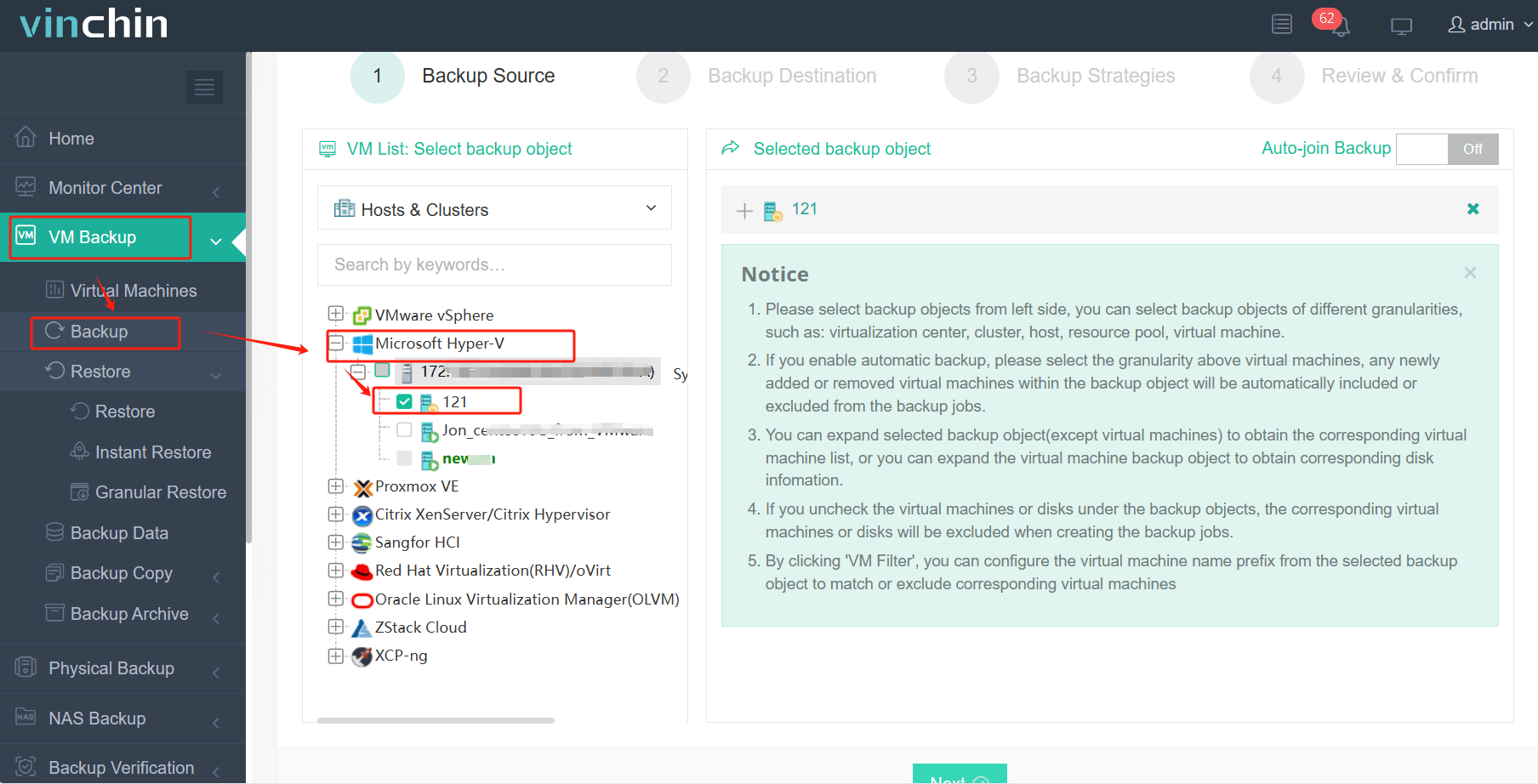
2.Then select backup destination
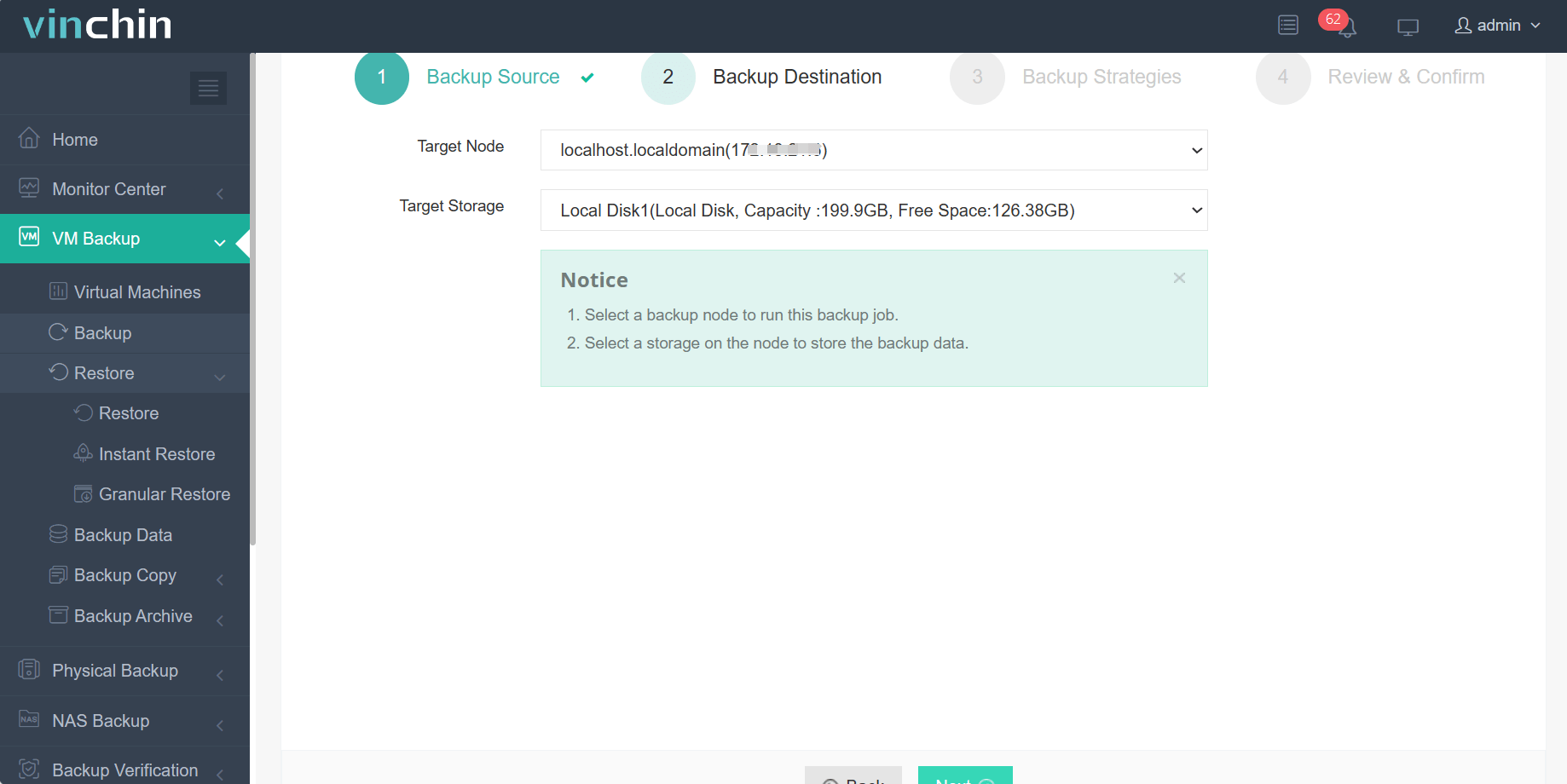
3.Select strategies
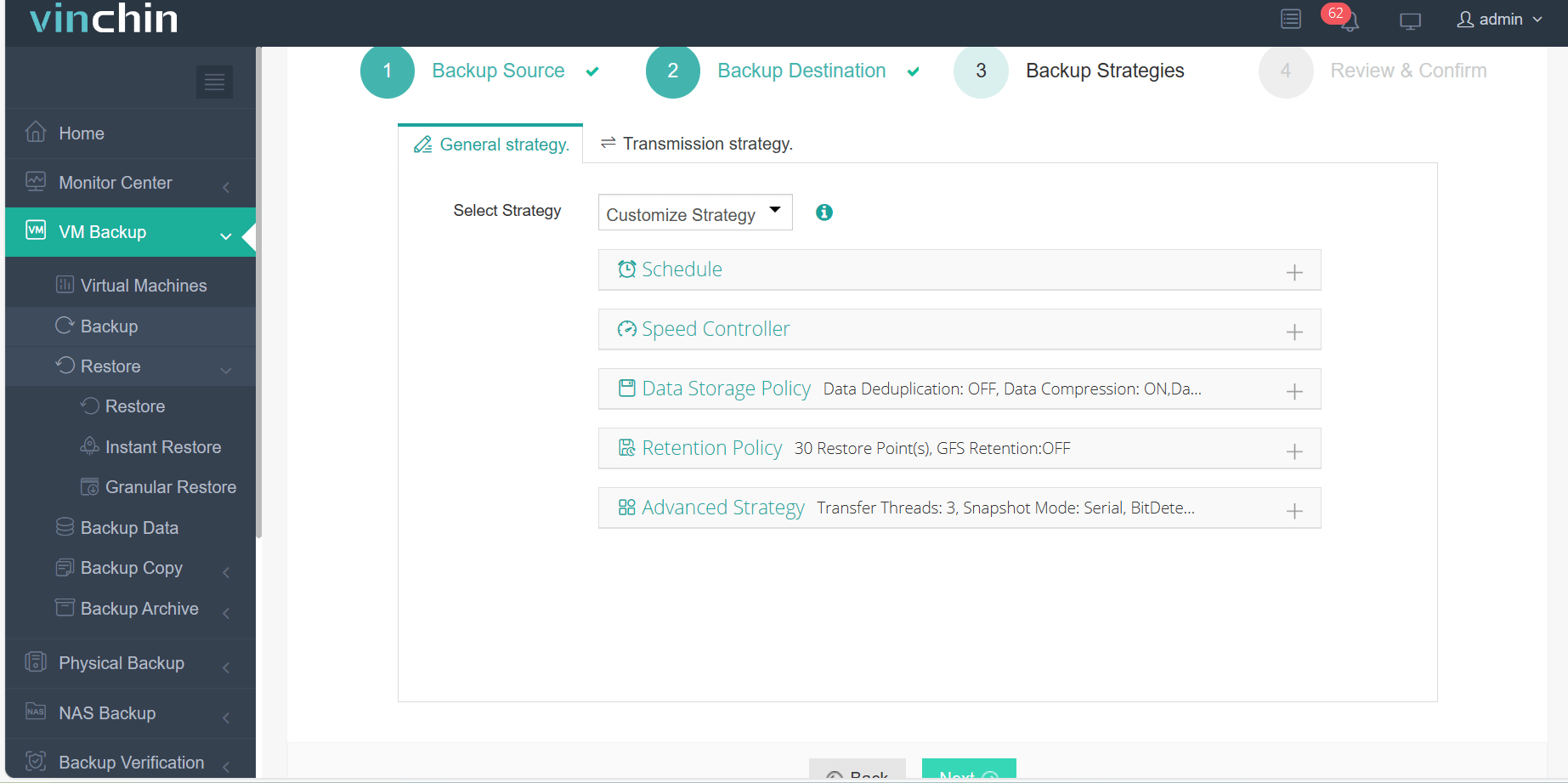
4.Finally submit the job
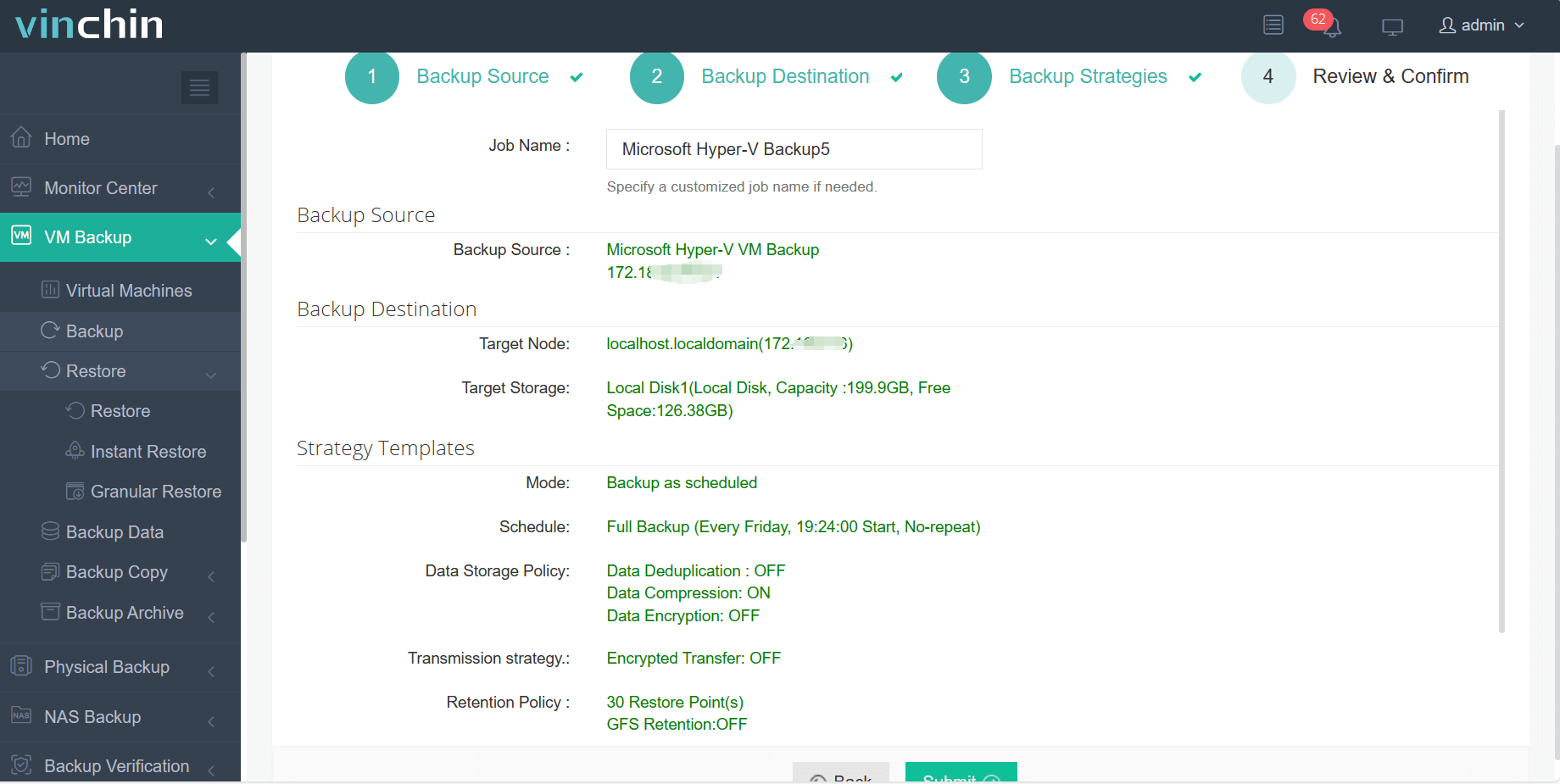
Globally trusted by thousands of organizations—with high ratings from industry experts—Vinchin offers a fully featured free trial valid for 60 days so you can evaluate every capability firsthand without limitation! Click below to download the installer now and deploy powerful protection within minutes.
Hyper‑V Server Core FAQs
Q1 How do I troubleshoot boot failures without GUI ?
A1 Use keyboard shortcuts at boot menu ; access recovery shell ; run DISM / SFC commands ; check logs via Get-WinEvent .
Q2 Can I convert an existing GUI install into Server Core ?
A2 Yes , uninstall GUI features using Uninstall-WindowsFeature Server-Gui-Mgmt‑Infra –Restart.
Conclusion
Hyper‑V Server Core offers unmatched security , efficiency ,and scalability —making it ideal foundation modern data centers.For complete protection,Vinchin provides powerful yet simple backup solutions tailored perfectly for any size deployment.Try it yourself today !
Share on:





